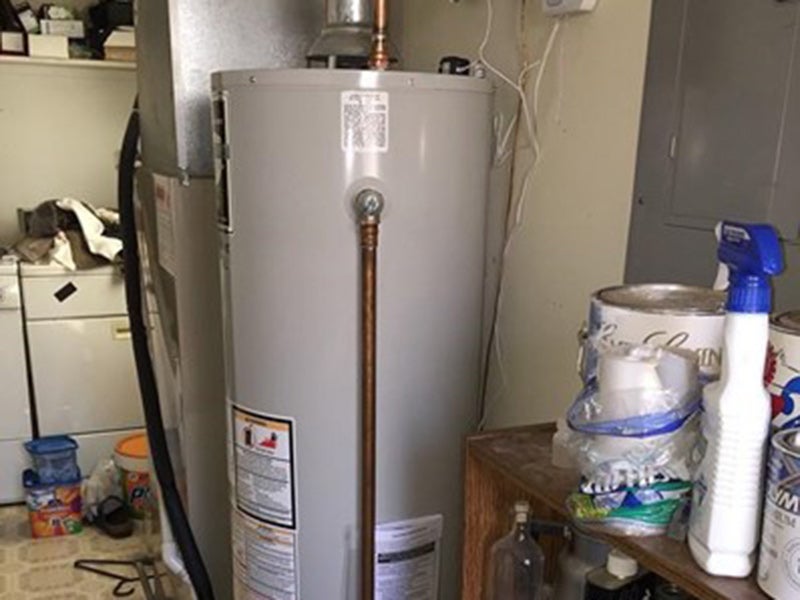How to Keep Your Home's Hot Water System in Good ConditionSteps to Successfully Care for Your Home's Hot Water System
How to Keep Your Home's Hot Water System in Good ConditionSteps to Successfully Care for Your Home's Hot Water System
Blog Article
They are making several good annotation on Tips For Maintaining Your Hot Water Heater overall in the content which follows.

Warm water is important for everyday comfort, whether it's for a revitalizing shower or washing recipes. To ensure your warm water system runs efficiently and lasts longer, normal maintenance is vital. This post supplies practical suggestions and understandings on how to maintain your home's hot water system to prevent disturbances and costly repair services.
Introduction
Preserving your home's hot water system may seem difficult, yet with a few basic steps, you can ensure it runs efficiently for many years ahead. This overview covers every little thing from understanding your hot water system to do it yourself upkeep suggestions and recognizing when to employ expert aid.
Relevance of Maintaining Your Warm Water System
Routine upkeep not just extends the life expectancy of your warm water system yet also guarantees it runs efficiently. Ignoring upkeep can bring about lowered effectiveness, greater power costs, and even premature failure of the system.
Signs Your Hot Water System Demands Upkeep
Knowing when your hot water system needs interest can stop significant concerns. Keep an eye out for indicators such as inconsistent water temperature level, unusual noises from the heating unit, or rustic water.
Comprehending Your Hot Water System
Prior to diving right into upkeep jobs, it's useful to comprehend the standard parts of your warm water system. Generally, this consists of the water heater itself, pipes, anode rods, and temperature level controls.
Monthly Upkeep Tasks
Normal month-to-month checks can assist capture small problems prior to they rise.
Purging the Hot Water Heater
Purging your water heater eliminates debris buildup, boosting performance and lengthening its life.
Monitoring and Changing Anode Rods
Anode poles stop corrosion inside the tank. Inspecting and changing them when broken is critical.
Checking and Changing Temperature Setups
Readjusting the temperature settings makes sure ideal performance and security.
DIY Tips for Maintenance
You can carry out several upkeep tasks yourself to maintain your warm water system in leading problem.
Checking for Leaks
Routinely evaluate pipelines and connections for leaks, as these can lead to water damages and greater costs.
Checking Pressure Relief Valves
Examining the stress relief valve ensures it operates properly and stops extreme pressure build-up.
Protecting Pipes
Insulating warm water pipelines minimizes warm loss and can save energy.
When to Call a Professional
While DIY upkeep is beneficial, some concerns call for expert know-how.
Complicated Concerns Calling For Specialist Aid
Instances include major leaks, electrical problems, or if your hot water heater is continually underperforming.
Regular Expert Maintenance Advantages
Specialist upkeep can include comprehensive examinations, tune-ups, and making sure compliance with security requirements.
Conclusion
Regular upkeep of your home's hot water system is necessary for effectiveness, longevity, and price savings. By following these pointers and recognizing when to look for expert help, you can make certain a reliable supply of warm water without unexpected interruptions.
How to Maintain an Instant Hot Water Heater
Before tinkering with your hot water heater, make sure that it’s not powered on. You also have to turn off the main circuit breaker and shut off the main gas line to prevent accidents. Also turn off the water valves connected to your unit to prevent water from flowing into and out of the appliance. 2. When you’re done, you have to detach the purge valves’ caps. These look like the letter “T” and are situated on either side of the water valves. Doing so will release any pressure that has accumulated inside the valves while at the same time avoid hot water from shooting out and burning your skin. 3. When the purge valves’ caps are removed, you have to connect your hosing lines to the valves. Your unit should have come with three hoses but if it didn’t, you can purchase these things from any hardware or home repair shops. You can also get them from retail stores that sell water heating systems. Read the user’s manual and follow it to complete this task properly. When the hosing lines are connected, open the purge port’s valves. 4. You should never use harsh chemical cleaners or solutions when cleaning your unit. Make use of white vinegar instead. It should be undiluted and you’ll probably use about 2 gallons. 5. Now flush your water heater. This task should probably take about 40 minutes. We can’t give you specific directions for this because the procedure is carried out depending on the type, model and brand of your heater. With that being said, refer to the user’s manual. 6. When you’re done draining the unit, you have to turn off the purge port valves again. Remove the hosing lines that you earlier installed on each of the water valves. Put the valve caps (purge port) back in their respective places and be very careful so as not to damage the rubber discs that are found inside these caps. 7. Now that everything’s back in place, check your user’s manual again to find out how to reactivate your water heating system. 8. Once it is working, turn one of your hot water faucets on just to let air pass through the heater’s water supply pipes. Leave the tap on until water flows smoothly out of it. https://www.orrplumbing.com/blog/2014/september/how-to-maintain-an-instant-hot-water-heater/

We hope you liked our part about Tips on Maintaining a Water Heater. Many thanks for spending some time to browse our piece of content. I beg you take the opportunity to share this blog entry if you enjoyed it. Thanks for your time invested reading it.
Book Today! Report this page